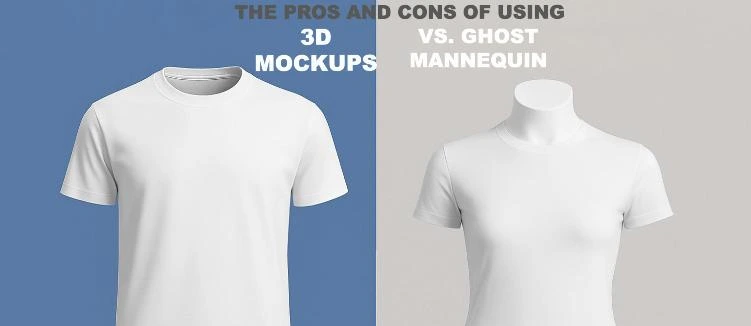Theodore Lowe, Ap #867-859
Sit Rd, Azusa New York
Find us here
Automotive Photography Ideas

Automotive photography isn't just about documenting vehicles; it's a dynamic art form that captures the spirit of motion, elegance, and technological innovation. To create truly captivating automotive images, photographers must master both technical precision and creative vision. Techniques like panning, reflections and striking backdrops all play a role in emphasizing the car's inherent beauty.
This genre not only appeals to car enthusiasts but also to audiences appreciating the interplay of light, shape, and color. Whether for advertising, editorial content, or personal enjoyment, photography centered on automobiles delivers a strong visual impact and fuels the imagination, proving why it remains a popular and ever-evolving field within photography. Each click of the shutter opens the door to a world where beauty and engineering coalesce, creating a timeless allure for the viewer.
Capturing the Essence of Speed
In the world of automotive photography, nothing pulsates with energy like the essence of speed. Cars are more than just machines; they're expressions of power, velocity, and engineering excellence. Visualizing their speed in a still image is both an art and a technical challenge. We’ll look at two dynamic techniques that let photographers portray this motion effectively.
Freezing Motion with High Shutter Speeds
Freezing a car in action sounds contradictory, but with the right camera settings, it's entirely possible. High shutter speeds allow automotive enthusiasts to capture snapshots of vehicles hurtling through space without a blur.
- Choose a shutter speed of at least 1/1000th of a second.
- Employ a fast lens to gather more light.
- Use continuous shooting mode for multiple frames per second.
This technique shows off the car's design and aerodynamics crystal-clear despite its speed.
Conveying Movement through Panning
Panning is a technique where the camera moves with the car. It captures the vehicle in sharp focus while the background blurs dramatically. This creates a strong sense of motion and speed.
- Set your camera to a slower shutter speed, around 1/60th to 1/250th of a second.
- Keep your focus on the car and move the camera at the same speed.
- Practice the movement to ensure smooth tracking.
With panning, photos exude the thrills of a high-speed chase or a race down a track.
Remember, mastering these techniques can transform ordinary car snapshots into breathtaking visuals. They reflect the sheer velocity that automotive enthusiasts love and celebrate the beauty of speeding cars in a frozen moment or a fluid motion blur.
The Art of Composition
The Art of Composition in automotive photography transforms ordinary car images into captivating art pieces. Mastering this skill highlights every curve and shimmer of a stunning vehicle. It invites viewers into a dynamic visual story. Effective composition turns a photograph into a memorable experience.
Playing With Perspectives
Changing the angle can greatly affect the mood and impact of automotive images. Here are ways to play with perspectives:
- Eye-level shots: They create a personal connection with the car.
- Low angles: Emphasize the power and grandeur of the vehicle.
- High angles: Offer a comprehensive view, capturing the car in its environment.
- Bird's-eye view: Deliver a unique, seldom-seen angle that surprises viewers.
- Macro details: Showcase the finer features and textures of the vehicle.
Using Leading Lines for Visual Flow
Leading lines direct a viewer's gaze through an image. They can be anything from road markings to natural elements. These lines create a path for the eye to follow.
|
Line Type |
Visual Effect |
Photography Tip |
|
Straight Lines |
Convey strength and stability |
Align the car parallel for emphasis |
|
Curved Lines |
Introduce elegance and movement |
Match the vehicle's curves for harmony |
|
Diagonal Lines |
Generate a sense of action |
Use angles to imply motion |
|
Zigzag Lines |
Create dynamic energy |
Incorporate with caution to avoid chaos |
Leveraging Natural Light
Capturing cars in the perfect light is an art. Natural light plays a key role in automotive photography. It can add depth, emotion, and drama to your shots. With natural light, photographers have a dynamic tool at their disposal. It's all about timing and positioning. This section explores how to use natural light to create stunning images of vehicles.
Golden Hour Glow on Vehicles
The golden hour is just after sunrise or before sunset. During this time, the sun's rays are soft and warm. They can wrap vehicles in a glowing light. This light brings out the rich colors and smooth lines of cars and motorcycles. Photographers find this time ideal for shooting. The light flatters the vehicle without harsh shadows.
- Plan your shoot around golden hour for the best natural lighting.
- Aim for a position where the light hits the vehicle side-on. This can emphasize its curves and features.
- Use the warm light to capture the reflection on the vehicle's body.
Creative Silhouettes in Backlight
Shooting into the light can create striking silhouettes. Position the vehicle between the camera and the light source. This can result in a bold, graphic outline. It's a creative way to depict automotive shapes.
- Find a clear, uncluttered backdrop to make sure the vehicle's silhouette stands out.
- Expose for the sky to get a darker vehicle silhouette against a brighter background.
- Try different angles to see how the light shapes the vehicle's outline.
Showcasing Automobile Details
Photography turns cars into art. Each image can reveal the heart and soul of an automobile. Detailed car photography invites viewers to a closer look. It highlights the hard work of designers and the beauty of the vehicle. This approach captures the essence of a car's character.
Macro Shots for Texture and Finish
Macro photography brings small things into the full frame. It shows the texture of the car's surface. Paintwork and materials look unique up close. Here are ways to create stunning shots:
- Use a macro lens to get close without losing clarity.
- Choose the right angle for light to enhance the texture.
- Focus on contrasts, where different materials meet.
By zooming in, the story behind every scratch and reflection comes to life.
Focusing On Unique Features
Every car has its own special touch. It might be a vintage badge or a modern light shape. Here is how to feature those details:
- Select a feature that stands out.
- Compose the shot to draw the eye directly to it.
- Use depth of field to blur the background, focusing on the feature.
These features tell a story. They connect the viewer to the car's unique identity.
Urban Environment as a Backdrop
Car photography transforms in urban settings. Streets and concrete bring out the sheen and character of any vehicle. Let's dive into locations that frame cars beautifully.
Graffiti Walls and Industrial Areas
Colorful graffiti walls serve as vibrant backdrops. They add energy and attitude to the image. Consider these tips:
- Park your car in front of colorful murals for contrast.
- Use industrial settings for a gritty, raw look.
- Shoot during golden hours for warm light.
Remember, the bold patterns and rough textures could make your photos stand out.
Cityscapes and Street Scenes
Cities offer diverse photography scenes. Skyscrapers and busy streets create dynamic images. Some ideas:
- Capture reflections on your car from the city's glass façades.
- Use neon signs for a futuristic glow.
- Include moving traffic as a blurry background.
City elements bring out the urban soul in car photography. Play with these ideas for stunning shots.
Incorporating Human Elements
Incorporating Human Elements in automotive photography transforms a static car image into a story. Vehicles are not just machines, but extensions of our personalities and our lives. By adding people to the frame, photos can evoke feelings and connect with viewers on a personal level. Capturing the interaction between humans and cars can suggest motion, purpose, and emotion.
Driver Interactions and Emotions
Focusing on the driver can add a dynamic edge to automotive photographs. Showing a driver in action behind the wheel, checking a car's engine, or simply admiring their vehicle can bring a photograph to life. To draw viewers into the frame, consider these ideas:
- Highlight the bond between the driver and the car.
- Capture moments of concentration, joy, or determination on the driver's face.
- Use the car’s interior to frame a driver's reflection in mirrors or windows.
Spectators and Crowds in Context
Audiences and bystanders can give scale and atmosphere to automotive photography. A crowd's reaction can tell a compelling story about the scene. Here are a few ways to include them:
- Position the camera to capture the car with a reactive crowd in the background.
- Show individuals admiring the car to convey its impact.
- Catch the excitement or anticipation in spectators' faces during races or car shows.
Conclusion
Capturing the essence of automobiles requires creativity and passion. With the ideas shared, photographers can take their work into the fast lane. Remember, lighting, angle, and composition are key. Put these tips into gear and watch your automotive photography race ahead.
Related blog posts
The Pros And Cons of Using 3D Mockups Vs. Ghost Mannequin
When you're in the business of selling products online, the way your items are presented can make or break a sale. You've got two powerful tools at your disposal: 3D mockups and ghost mannequin photography.


